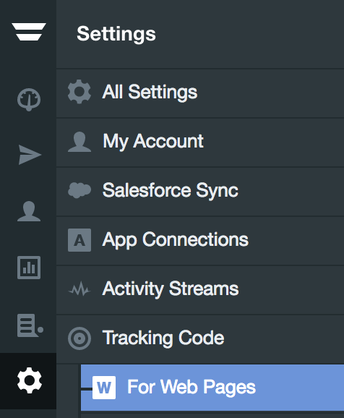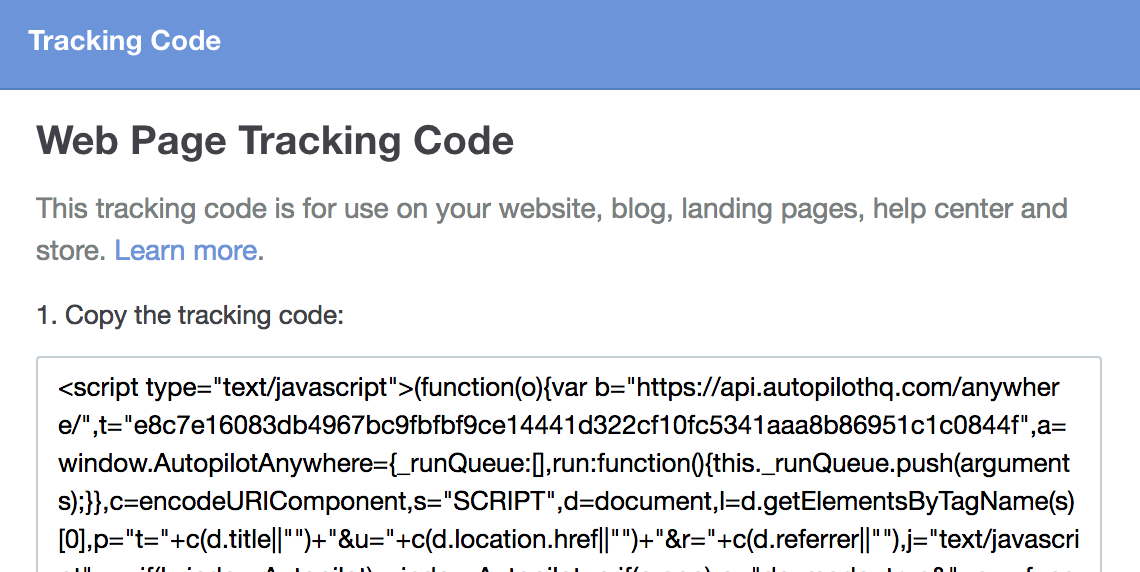Autopilot: Track visitors to your web pages
What does the tracking code do?
The tracking code is your ticket to success on Autopilot. It's the first thing you should setup as it's required in order to:
- see the web pages that both anonymous and known contacts visit;
- convert anonymous visitors into leads using Proactive Headsup;
- create smart segments and trigger Journeys based on the web pages that contacts visit; and
- measure marketing campaign performance by tracking UTM parameters.
Thousands of organizations including Patreon, Greenpeace and Microsoft use the tracking code to supercharge their marketing.
How do I setup the tracking code?
Go to Settings then under "Tracking Code", click "For Web Pages":

This will reveal your unique tracking code. It can be used across all of your web properties; for example, your website, landing pages, blog, support site or store. However, note that there is a different tracking code for apps.

Copy and paste this code into the <head> tag of every page you want to track. We recommend putting the code on all pages, so you can track and segment your leads more effectively.
If you are familiar with editing your web pages' HTML this step should be familiar. It’s exactly the same steps required to implement Google Analytics on your website. However, if this step is confusing, speak to your web master or system administrator for help.
Once you've successfully added the code, learn how visitors go from being anonymous to known.
Is the tracking code asynchronous?
Yes, it is fully asynchronous. The advantage of being asynchronous is that it's guaranteed never to get in the way of other parts of your web page loading.
What do the advanced options do?
The advanced options are designed to help you become GDPR compliant. Learn more here.
